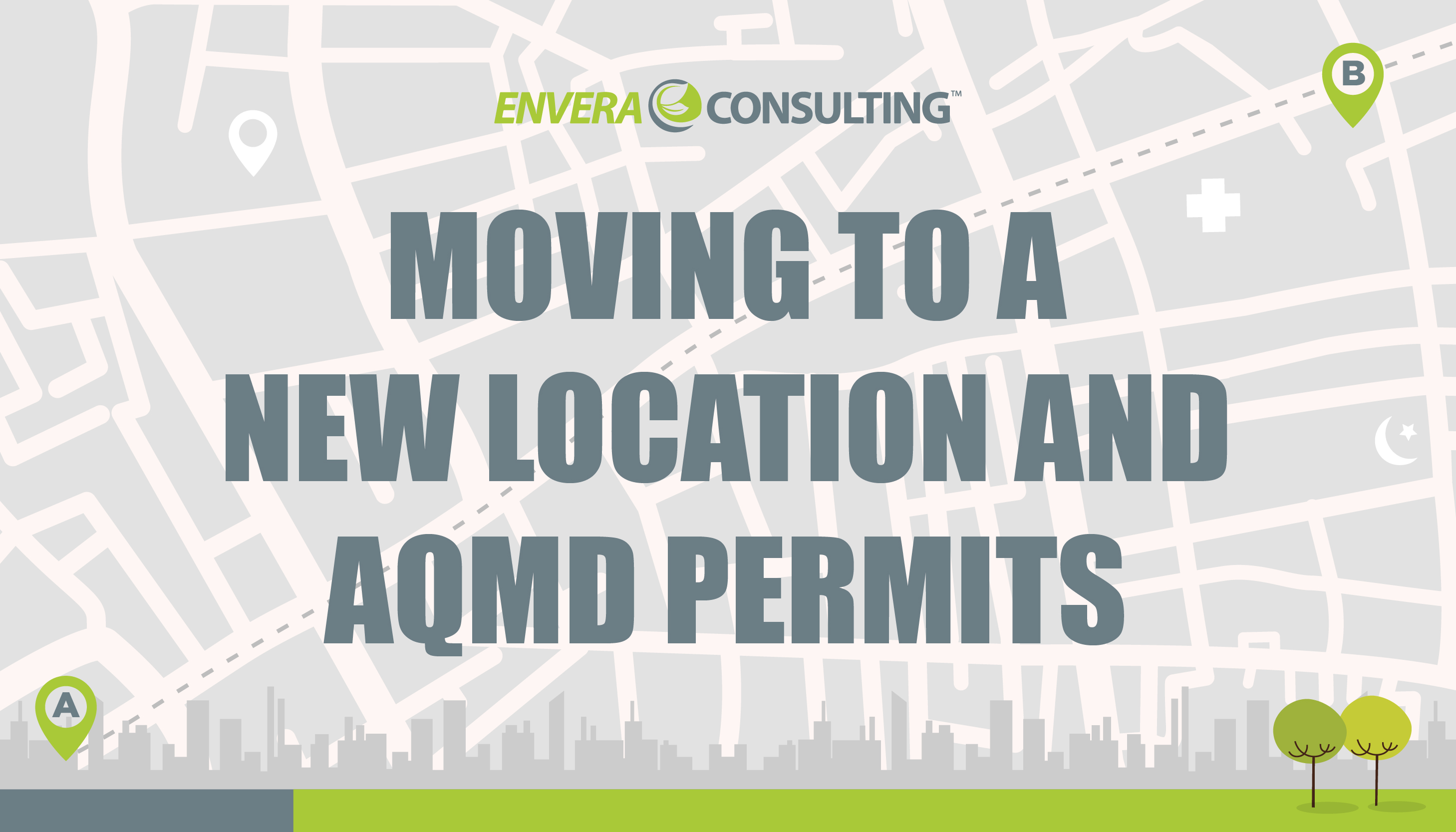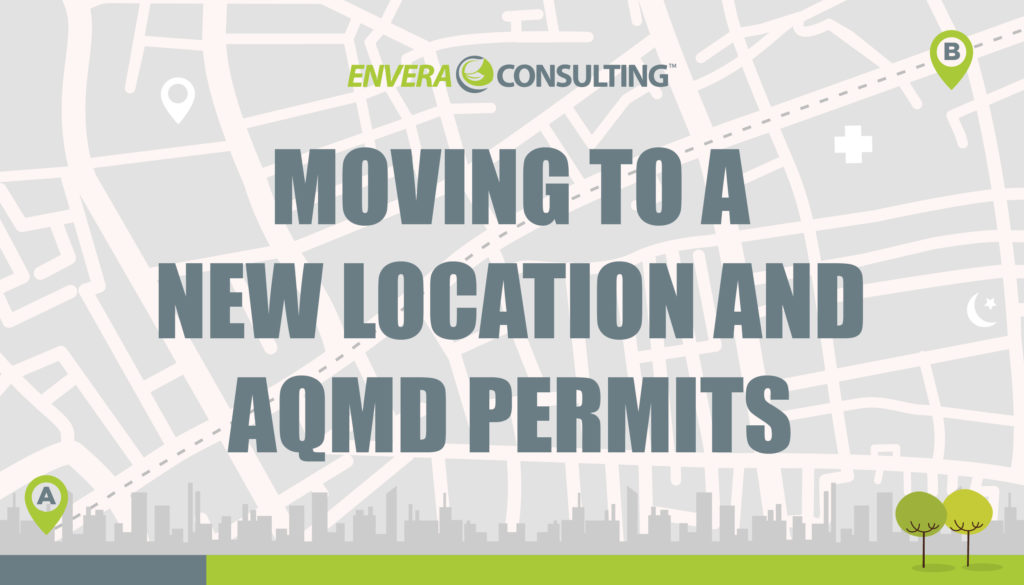

Businesses move all the time, and they move for various reasons. An article in Entrepreneur cites five reasons why businesses move:
- Labor and workforce issues
- The desire to reach new market
- The need to upgrade facilities or equipment
- The desire to lower costs or increase cash flow
- Considerations about quality of life
As it relates to South Coast Air Quality Management District (AQMD) air permits, there is one thing everyone must know about when moving:
Under AQMD Rule 206, air permits expire when the equipment moves from one location to another.
Therefore, if your business has equipment that holds air permits from the AQMD, those permits will expire when your facility moves.
In order to properly operate your equipment at your new location (assuming it is still within the AQMD), each piece of your equipment must have a permit issued to the new location prior to construction, operation, or relocation of the equipment. That means you need to reapply for permits for all equipment when you move.
With that in mind, there are five points to consider prior to going through the moving process, which you should keep in mind — even if Donald Trump doesn’t become president.
1. You should have all of your permits in hand before moving or before starting construction on equipment at your new location.
The AQMD’s rules require you to have a permit to both construct and operate a piece of equipment. In our experience, there has always been some confusion as to what it means to have constructed a piece of equipment.
We’ve seen each of the following scenarios counted as “construction of an engine”:
- Building the foundation for a new engine
- Having an engine on-site, even if it’s still in the crate
- Moving an existing engine from the old to the new location
Due to the different interpretations, to avoid any confusion about what or when a piece of equipment is considered “under construction,” it’s best to err on the side of caution and not move a piece of equipment or start any work on one that needs a permit until all of your permits have been approved and issued (meaning you have them on site, should an inspector ask for them).
2. You may need to notify the public that you are moving to the area.
Under AQMD Rule 212, any facility that’s located within 1,000 feet of the outer boundary of a school must provide a notice to the parents or legal guardians of children who attend that school. The applicant must also distribute the notice to each address within a 1,000-foot radius from the outer property line of the proposed new or modified facility.
3. You may be subject to new emission requirements — which might mean buying new equipment.
Depending on the rules that pertain to your equipment and to your facility, moving may sometimes cause you to be subject to new emission requirements.
For example, per AQMD Rule 1147, a piece of equipment can be exempt from the rule’s emission requirements if the piece of equipment was installed between 2007 and 2012. So if you then move this equipment to a new location, it no longer qualifies for this exemption.
In practice, and depending on the type of equipment, this may mean retrofitting a piece of equipment with a new burner in order to meet the emission requirements of Rule 1147 — or you may have to buy a new piece of equipment altogether.
4. You may need to implement a plan to lower the health risk of the new location.
Each facility that emits air contaminants poses a health risk, which is due to a combination of factors, including types of air contaminants, the emission rates, and the distance from the equipment to an off-site receptor.
In practice, the health risk from a given facility will increase if there are off-site receptors closer to the equipment. And if the health risk from the operation of a piece of equipment exceeds certain levels, additional controls may be needed in order to comply with AQMD permitting rules.
So when you move to a new location, it’s best to know the types of receptors in the area and their distance to your facility so that you can know the impacts of your facility’s operations.
5. You may be required to secure emission-reduction credits in order to operate your equipment at the new location.
Emission reduction credits (ERCs) are credits issued by the AQMD that symbolize real and quantifiable emission reductions due to the shut-down of older pieces of equipment or facilities.
During the NSR process, a piece of equipment will need to be assessed to determine if it requires emission reduction credits.
If these credits are needed, you’ll need to purchase them from the open market in order to get your permits from the AQMD (there are exemptions for certain cases).
Moving may be a smart decision, depending on the reason or combination of reasons for the move. But if you’re planning to move your facility to another location within the AQMD, knowing these five points above can reduce some of the unknown bogies that can arise during the moving process.
If you need to deal with California’s air-quality regulations but are put off by the implications of health-risk assessments, contact us for guidance.